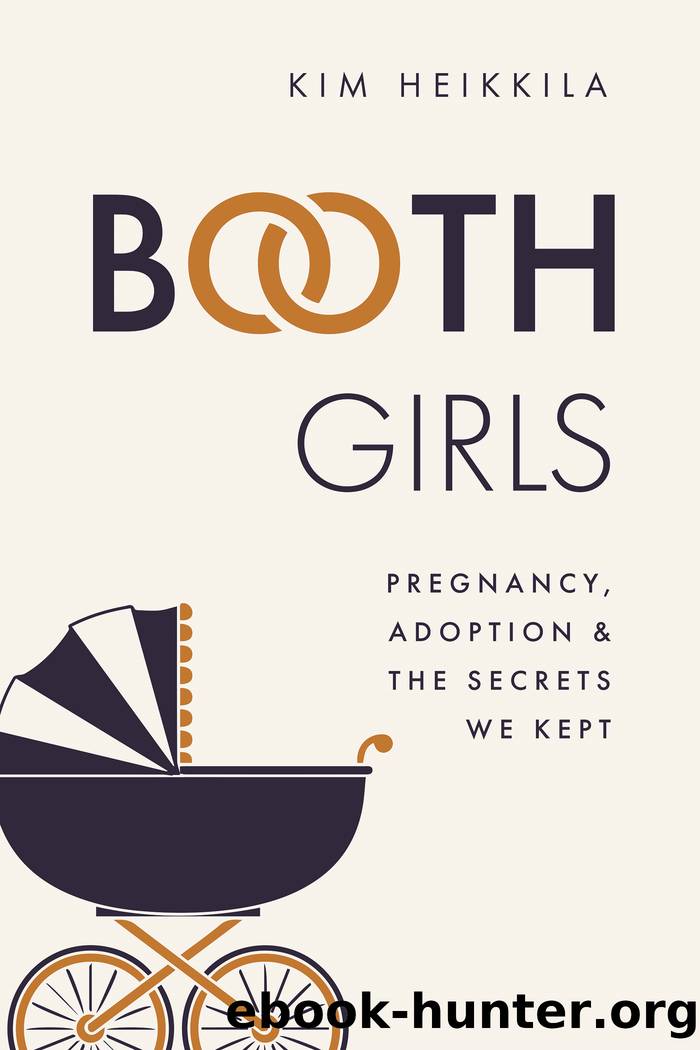Booth Girls by Kim Heikkila

Author:Kim Heikkila
Language: eng
Format: epub
Publisher: Minnesota Historical Society Press
Published: 2021-10-15T00:00:00+00:00
Momâsâand Jackâsârace rendered her baby, once relinquished, immune to concerns about finding a home, but race defined my motherâs and sisterâs experience as significantly, if differently, as it did that of any nonwhite woman or child. Indeed, white single pregnant girls and women became important suppliers of babies for the booming adoption market. In the United States, the number of families formed through adoption tripled in the first two decades of the postwar period, rising from 50,000 in 1944 to 152,000 in 1966; the number would peak in 1970 at 175,000. Throughout this period, however, the proportion of children adopted by biological kin hovered at just over or under 50 percent, and, in 1950, half of all adopted children had been born to married parents. Nevertheless, babies born to white unmarried mothers constituted a significant portion of adoptable children. According to Rickie Solinger, by the late 1950s, a pervasive ârelinquishment cultureâ led to surrender rates of up to 90 percent in some maternity homes, and in 1962, children born to unmarried women constituted 80 percent of all nonfamily adoptions. From 1945 to 1973, Ann Fessler reports, 1.5 million babies were relinquished to nonfamily adoption.36
My sister was one of them.
JANUARY 14, 1961
Everything had seemed so clear, so obvious, six months ago. Then, her pregnancy was the problem that adoption would solve, the baby an abstract idea only hinted at through nausea and fatigue.
Now, as she awaits the arrival of her babyâthe one whose feet kicked at her belly, whose hiccups made her laugh, whose being she feels inside her ownâclarity has given way to worry.
During the day, she plays cards and smokes and swaps stories with the other girls. She scrubs the floors and dusts the furniture.
But in the still of the night, she worries.
She worries that her labor will begin in the wee hours and that no one will come to help. She worries about the pain of bringing a baby into the world and the pain of letting that baby go.
She tosses and turns as she thinks of Angie, who is keeping her baby, with or without her boyfriendâs help.
She imagines telling her caseworker that she has changed her mind, her parents that sheâs coming home, her grandmother that she has erred, her brothers and sisters that they are now aunts and uncles.
She imagines going back to Blaine, squeezing into an already-full house with a baby, quitting school. She feels the sidelong glances from the neighbors, the sting of their wagging tongues.
She cannot do it. She is not brave enough.
She thinks of Gerri, her silence, her bravado, her wails.
She imagines saying goodbye to her own baby.
She worries that she will not be strong enough.
Letting Go
Itâs one thing to make a plan, another to see it through. Even if Mom had decided on adoption for her baby before she met Patricia Peart from Anoka County, and even if she truly believed it to be in her and her childâs best interest, saying goodbye to a baby she had nurtured for nine months was not easy.
Download
This site does not store any files on its server. We only index and link to content provided by other sites. Please contact the content providers to delete copyright contents if any and email us, we'll remove relevant links or contents immediately.
Machine Learning at Scale with H2O by Gregory Keys | David Whiting(4021)
Harry Potter and the Goblet Of Fire by J.K. Rowling(3753)
Never by Ken Follett(3734)
Unfinished: A Memoir by Priyanka Chopra Jonas(3283)
Fairy Tale by Stephen King(3178)
The Man Who Died Twice by Richard Osman(2969)
Will by Will Smith(2754)
Rationality by Steven Pinker(2242)
The Dark Hours by Michael Connelly(2201)
It Starts With Us (It Ends with Us #2) by Colleen Hoover(2163)
The Storyteller by Dave Grohl(2146)
The Dawn of Everything: A New History of Humanity by David Graeber & David Wengrow(2098)
Can't Hurt Me: Master Your Mind and Defy the Odds - Clean Edition by David Goggins(2098)
Friends, Lovers, and the Big Terrible Thing by Matthew Perry(2092)
The Becoming by Nora Roberts(2047)
The Stranger in the Lifeboat by Mitch Albom(2023)
Cloud Cuckoo Land by Anthony Doerr(2009)
Love on the Brain by Ali Hazelwood(1924)
Einstein: His Life and Universe by Walter Isaacson(1920)
